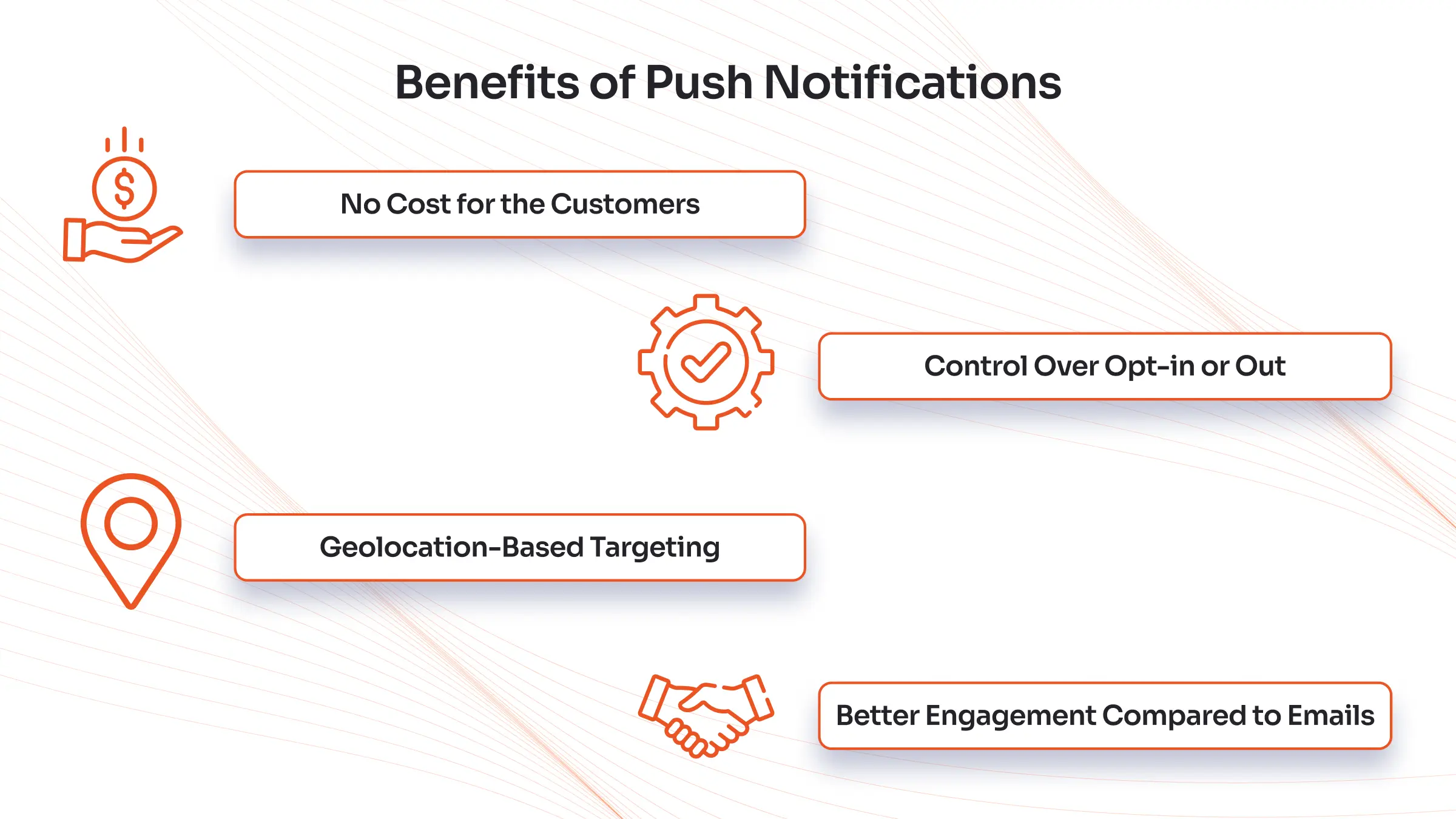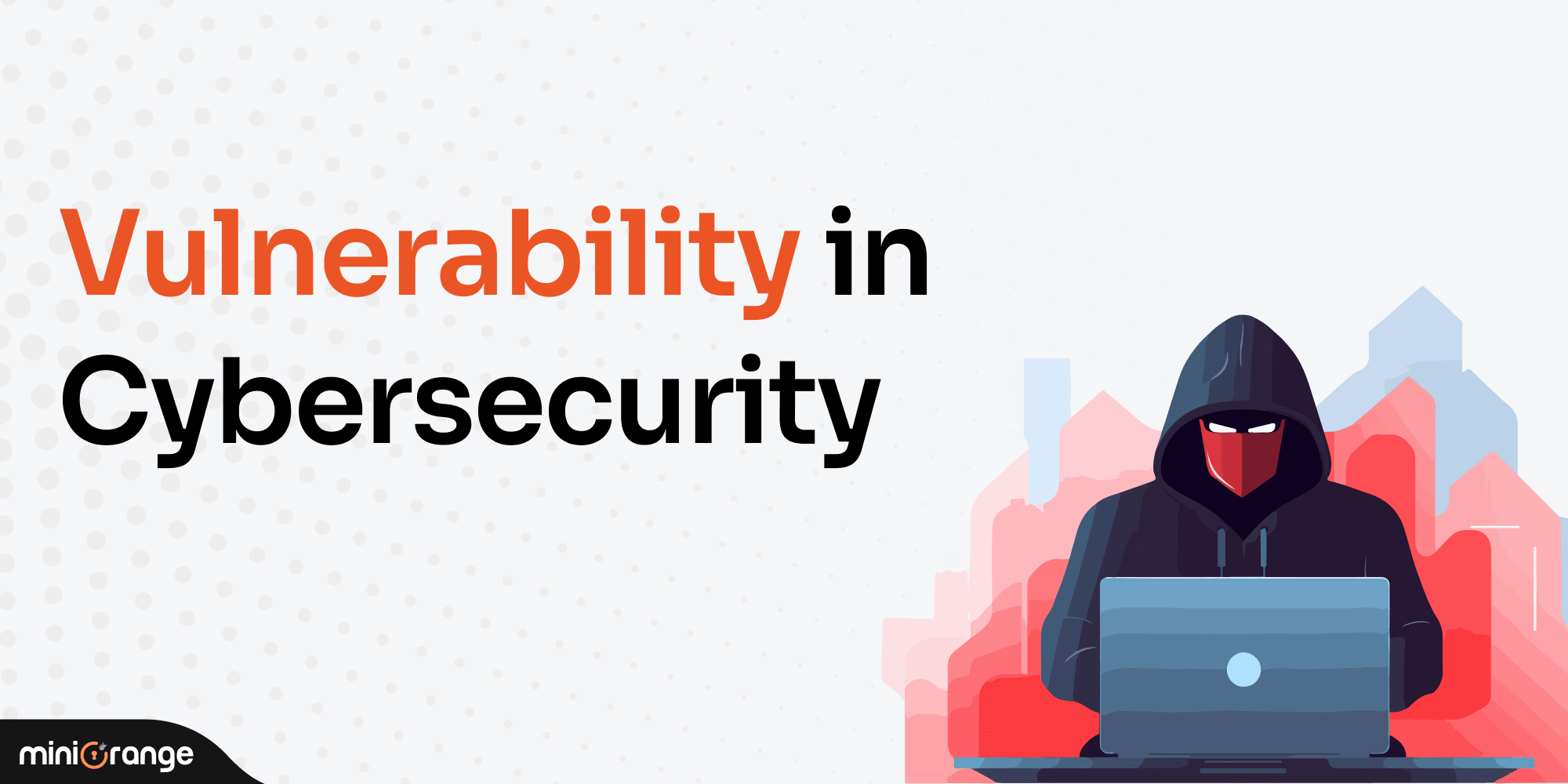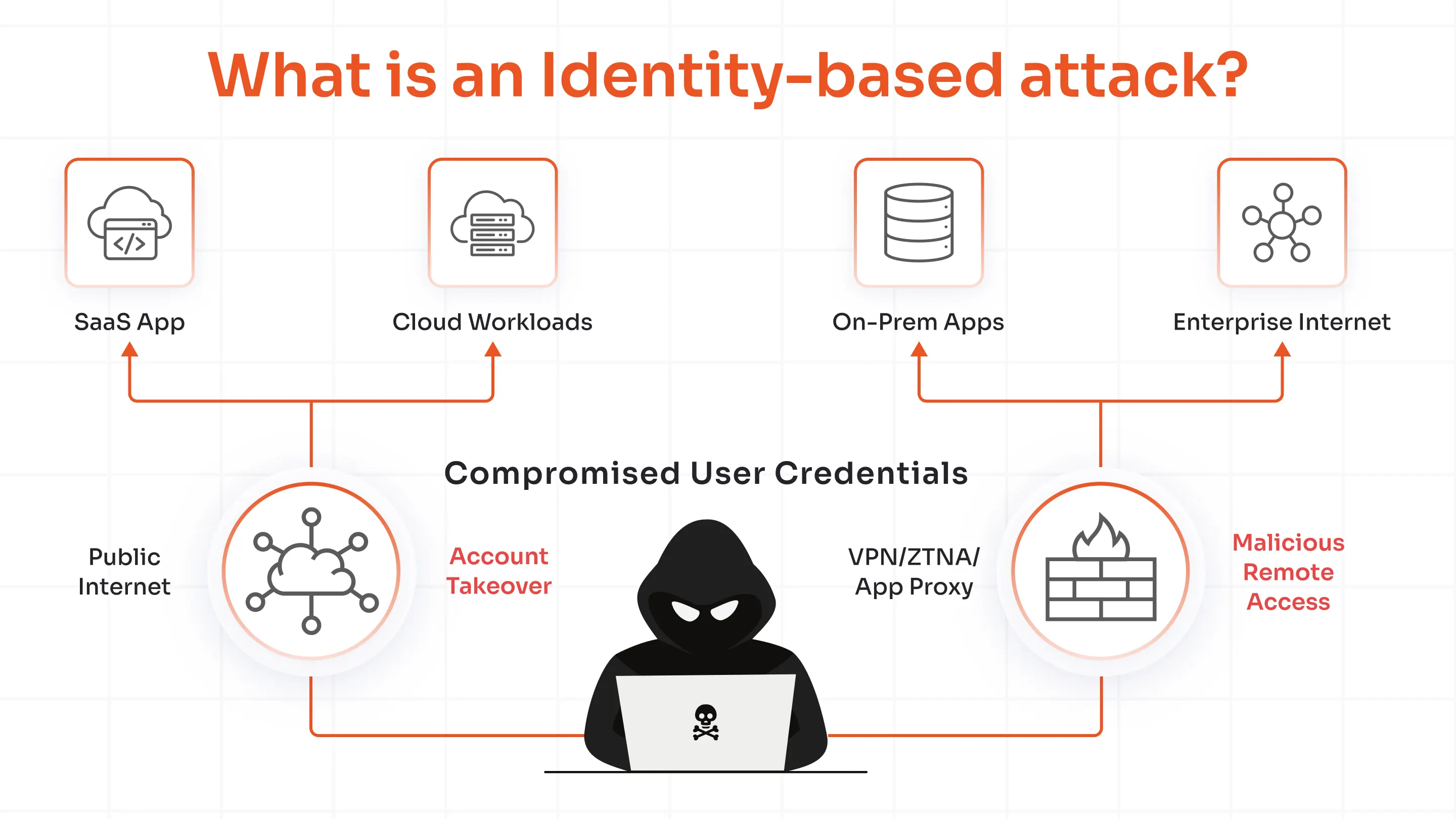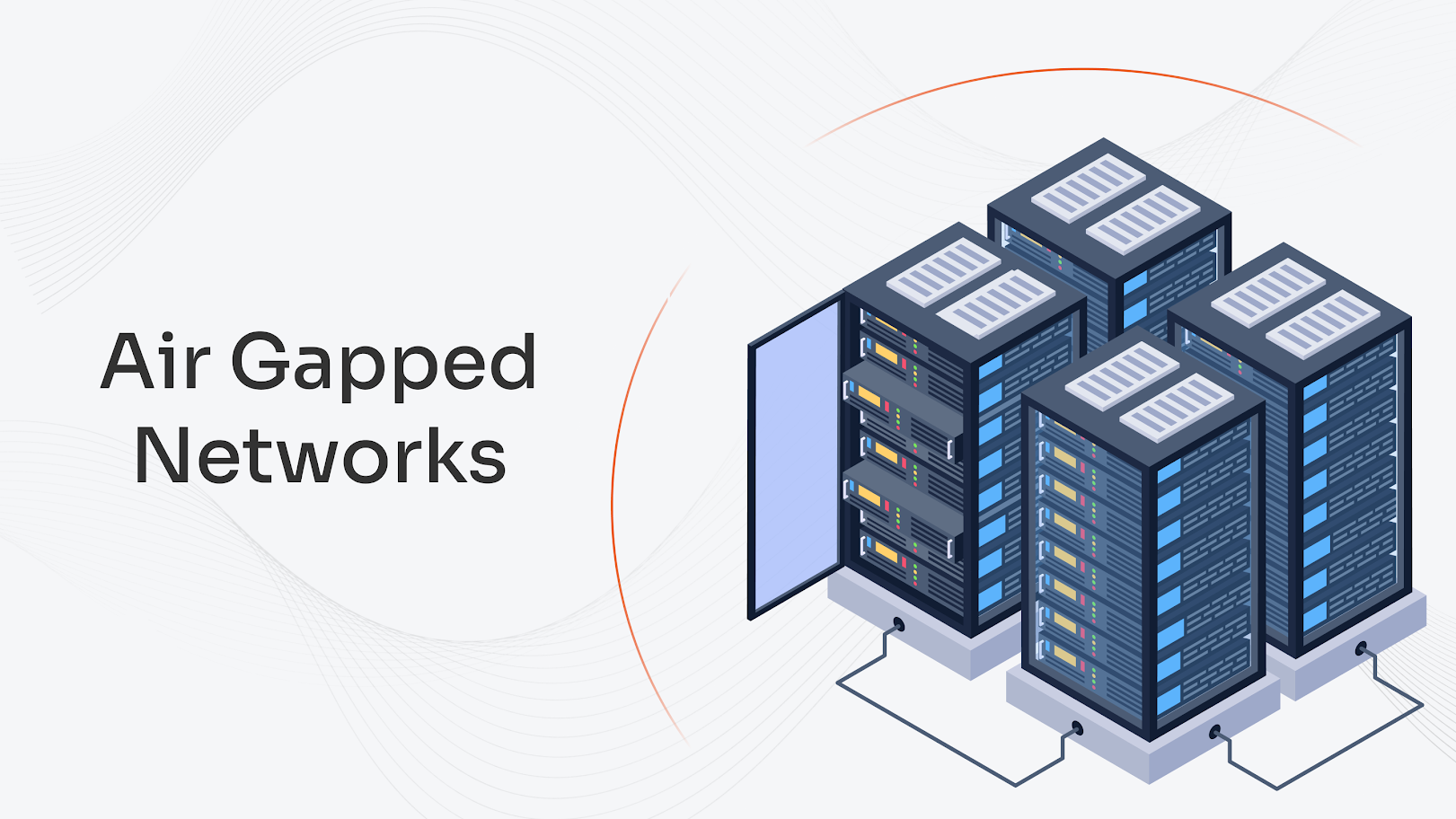A push notification is like your super personal butler. He doesn’t wait for you to ask, instead gently taps on your shoulder whenever something important happens - like a new guest or house breach. So, what is a push alert? They're these little taps that light up your phones when something interesting happens on one of your apps. These could be SMS, emails, new updates, or even OTPs.
Push notifications play a crucial role in MFA (Multi-Factor Authentication). For instance, if you want to make a transaction via net banking, you receive an OTP, in the form of push notification, right after initiating a transaction. Apart from OTP, other MFA methods include SMS Verification, biometric authentication, and hardware tokens. Find these MFA solutions with miniOrange, who is known to offer best-in-class MFA solutions to secure your banking transactions, applications, and social media accounts.
What are Push Notifications?
Push notifications meaning - messages sent directly from an application to the user's device - desktop or mobile phones. They either appear in the notification section or on the lock screen. Users can view push notifications even when they’re not actively using an app. There’s also an option to hide push notifications on mobile devices.
Overall, what is a push alert - a way to keep people engaged in a highly competitive market. But, they can turn out to be problematic if used thoughtlessly, as too many notifications can compel a user to uninstall an app. Currently, an average US smartphone user receives over 46 app push notifications each day. Additionally, medium opt-in rates on Android and iOS devices are 81% and 51% respectfully.
Why are Push Notifications Important?
Here are six reasons why push notifications are important for businesses and entrepreneurs.

1. Revenue Growth via Upsell/Cross-Sell
Apps can suggest more products or services based on previous clicks or current cart items. These products compliment the customer’s interests and preferences. For instance, a customer buying an electronic product could be sent a push notification offering discount coupons or a protection case for the electronic item. Businesses can enhance the average value of a product by suggesting additional items.
2. Retain and Engage Customers
Users tend to download a magnitude of apps for a smartphone and forget about it after using it once or twice. But, leveraging push notification can keep users active and engaged with the app.
3. Audience Segmentation
So, not all customers will open push notifications, but if customized as per audience’s preferences and needs then it can leave a lasting impression. You can segment the audience based on the data gathered via analytical tools, and then create appealing notifications.
4. Better Communication
Notifications are a way to maintain continuous dialogue between the customer and business throughout the customer lifecycle. Continuous engagement amplifies users’ purchase journey and also encourages loyalty, along with retention.
5. More Conversions
Real-time marketing via push notifications are a fantastic way to increase purchases. When you introduce your premium products like a limited-time deal, you tend to create a sense of urgency and urge your users to buy the product immediately. Push notifications are a proven method to increase conversions by sending the customers back to their abandoned carts.
6. Augmented User Experience
Push notifications appear daily on the lock screen, preventing the need to open the app to check updates. Additionally, users receive real-time updates via social media, emails, news apps, or gaming, which helps them to stay in sync with the world happenings. Regular updates are essential to keep the app relevant in an users’ life and boost overall experience.
An Anatomy of a Push Notification
Here’s a breakdown of major facets that comprises an effective push notification.
- Media: Include emojis, images, videos, or GIFs in your notifications. These make them engaging and capture attention faster than a normal text message.
- App Icon: Your business icon tells a user where these messages are coming from. A majority of the notifications fail to receive a click due to lack of an icon.
- Title: Concise, compelling, and clickbait worthy titles are the key. It should instantly deliver a quick idea of what the notification is about.
- Message: This is the main section of your notification, so make sure to keep it action-oriented, direct, and relevant. Aim to keep it as clear as possible.
- Time Stamp: This gives a context to when a message was sent. An essential component for time-sensitive messages such as OTP.
- CTA: Include action words or buttons such as ‘View Offer’ ‘Shop Now’ or ‘Click Here’ to compel users to take an action immediately.
How Do Push Notifications Work?
Push messages depend on a delivery method that assures messages reach users at the correct time. They are triggered by user actions, such as scheduled events, to-dos, abandoned carts, or achieving a milestone.
After a push notification is created, it is sent from the app’s server to a platform service such as APNs (Apple Push Notification Service) for iOS or FCM (Firebase Cloud Messaging) for Android. These services send notifications to the users’ device, where it appears on the lock screen, as a banner, or in the notification center.
Interaction data such as CTR, dismissals, action, etc. is sent back to the app’s server to improve future messaging strategies.
Types of Push Alerts/Push Notifications
There are four main types of push alerts depending on the device and platform. Let’s look at them in detail.
1. Web-Based Push Notifications
Web-based push notifications are messages that websites send to a users’ device - desktop or mobile phone, via a browser. These notifications are sent in real-time and appear as pop-ups on the screen, usually at the top-right corner or bottom-right corner of the screen.
Benefits of using web-based push notifications are:
- Highly personalized messages that cater to the audience’s preferences and interests.
- Notifications drive back traffic to the website and boost overall engagement.
- High conversion rates for actions - sign-ups, purchases, subscriptions, downloads, etc.
Key aspects of web push notifications are title, message, website icon, CTA, and landing page URL. These notifications rely on the Push API technology that is supported by the web browsers like Safari, Firefox, Chrome, and Edge.
2. Mobile App Based Push Notifications
With an increase in the use of smartphones and availability of cheaper data plans, mobile app based push notifications have surged significantly in the past decade. Whether it is a game update, a news alert, or a response from a dating app, mobile-based push notifications have it all covered.
Users are likely to receive four types of mobile app based push notifications:
- Transactional: Money transfers, credits, or pending dues are all covered here. These can be time-sensitive notifications, in case the user is using UPI or net banking for money transfers.
- Promos: These messages notify users about new opportunities, features, discounts, and new arrivals.
- Messages: Users are directly informed if someone directly texts them via an app like Instagram, WhatsApp, or Snapchat.
So, basically mobile app based push notifications are generated via an application installed on users’ smartphones. These notifications appear on the lock screen or in the notification center.
3. Desktop Push Notifications
Desktop push notifications directly appear on a users’ computer screen. These are triggered via desktop or web applications. For instance, Google hangouts, WhatsApp, Spotify, or antivirus messages. These notifications also tell a user about the next action items like installing an antivirus software or updating a PC. These messages are perfect for those who spend ample time on their computers.
4. Wearable Device Push Notifications
This type of messages are an extension of mobile notifications. When a user receives a mobile based push notification, and has their phones connected to a smartwatch or any other wearable device, the messages are displayed as a wearable push notification. This allows users to take action promptly. Examples include, calls, sleep cycles, fitness tracker apps, SMS, etc.
Read More: 2FA vs MFA: What’s the Difference?
Key Benefits of Push Notifications
Benefits of push messages or notifications are:

1. No Cost for the Customers
Push notifications are free for the customers because they don’t have to pay to receive them. They simply have to open the website or application and enable push notifications. However, from the sender’s perspective, the cost of push notifications can range from $200 to $500 a year based on business size and number of notifications sent.
2. Control Over Opt-in or Out
Users have complete control over whether to opt-in or opt-out from receiving messages or alerts. However, for successful marketing campaigns and conversions, user opt-in plays a key role. Without them, you cannot reach your users. There’s a difference between iOS and Android when it comes to opt-ins. The difference is in the way each OS (Operating System) handles notifications. For instance, iOS users must choose to accept messages from the time they launch a new application. There’s only one shot to make a good impression.
3. Geolocation-Based Targeting
When users turn on their location services, and permit an application to track their location, the application sends them messages based on where they are located - nearby petrol pumps, traffic, or nearby restaurants.
4. Better Engagement Compared to Emails
Messages are short, precise, and concise. They deliver what’s needed in a limited time. Whereas, emails can be a longer, explanatory way of displaying a product. In this fast paced world, reading long paras takes up time, resulting in little to no engagement levels.
Push Notifications Vs. SMS
SMS (Short Message Service) are those when you receive a text message with a preview. They’re a go-to option for businesses because they work on every device. You can use SMS notifications to send internal messages, alert about upcoming events, or let the customers know about reservations.
On the other hand, what are push alerts? They are pop-ups that appear on the mobile screens. They’re often mistaken for SMS, but they’re a part of Multi-Factor Authentication and a way to authenticate users. The biggest difference is that mobile push notifications can appear when users are using or not using their phones.
An interesting aspect is that both push notifications and SMS are types of authentication. They both are extensively used by the banking sector, social media, and government sites to authenticate users.
1. When to Use SMS Notifications
SMS notifications can be used as emergency texts such as heavy rainfall alerts from the government, cyberattack prevention, and cyclone alerts.
They can also be used to send out advertising messages such as an Amazon sale or new arrivals.
2. When to Use Push Notifications
You can use push alerts to ask the users to take actions, send promos, and let people know about new updates. The most essential reason to use notifications is to ensure that users don’t forget about your brand or business.
Push messages are a way to encourage users to return to your site or app to check new content or services, or even restock their favorite products.
Common Challenges of Push Notifications
Discover notable challenges of push notifications that you may face:
1. Network Connectivity Issues
Inconsistent or poor internet connectivity can prevent notifications from being delivered. If a user’s device has limited network access, then messages may encounter delays or fail to deliver altogether.
You can work with messaging infrastructure that is reliable. Also, go for push amplification techniques that may help to reach users during challenging connectivity conditions.
2. OS Limitations
OS like iOS or Android tend to place multiple restrictions on notifications to conserve device resources such as battery life or data plans.
Comprehending the nuances of every operating system is the key to make push messages work in your favor. Consider designing notifications that blend well with both OS.
3. Unreachable or Inactive Users
Sometimes, users may stop using an application because they have found alternatives or they’re not interested anymore. In such cases, push alerts are delivered but never opened. They go unnoticed and are eventually deleted.
To overcome this challenge, you can segment your audience based on their activity levels. Next, implement re-engagement strategies like SMS or email campaigns for inactive users.
4. Backend Server Failures
Usually, push messages go undelivered due to backend issues on your provider’s end. So, problems such as technical glitches, server maintenance, or downtime prevent alerts from reaching the users.
You can solve this by monitoring push notification service provider’s error rates, to understand the reason behind delivery failures.
How miniOrange Can Boost Your Push Notification Campaigns
miniOrange is equipped with top-notch integrations and tools such as MFA to build your push notification campaigns. Whether your goal is to bolster security, user engagement, or customer communication, miniOrange MFA product has got you covered.
Leverage miniOrange MFA solutions for user authentication and real-time updates. We support push notifications as a part of MFA, integrating it with platforms like WordPress, Atlassian, Drupal, Shopify, and more.
Want to know more? Connect with us for a free trial today!
Conclusion
In a nutshell, what is a push notification - a way to send alerts to people, so they’re aware about your products and services. Apart from this, it plays a key role in multi-factor authentication. The importance of MFA lies in its ability to reduce cyberattacks by offering layered security. It verifies users during transactions, logins, and access to sensitive data by sending push notifications.
Additionally, amongst miniOrange MFA methods, push notifications play a crucial role in ensuring user authentication. Other than this, CBA (Context-Based Authentication) and biometric authentication are also considered impactful MFA methods. To add additional note - biometric authentication advantages are convenience, speed, and better user experience.
To conclude, push alerts are here to stay, they're here to gently nudge your shoulders in case something interesting happens in the reel world. They’re your personal super loyal butler who keeps you on your toes.
FAQ's
1. Are push notifications secure?
Yes, definitely they’re secure, especially when they’re used for authentication purposes.
2. How do I send push notifications with miniOrange?
To send push notifications from miniOrange, just install the miniOrange MFA application, register your device, and then configure your application within the miniOrange platform.
3. What is a push message?
Push message is an alternative name for push notification - used to send messages via an app.
4. What’s the difference between remote and local push notification?
Remote notifications are sent from a server through a push notification service, ensuring broader reach. Local notifications are scheduled and triggered by the app itself, often for alarms or reminders, and they don’t need a server.




Leave a Comment